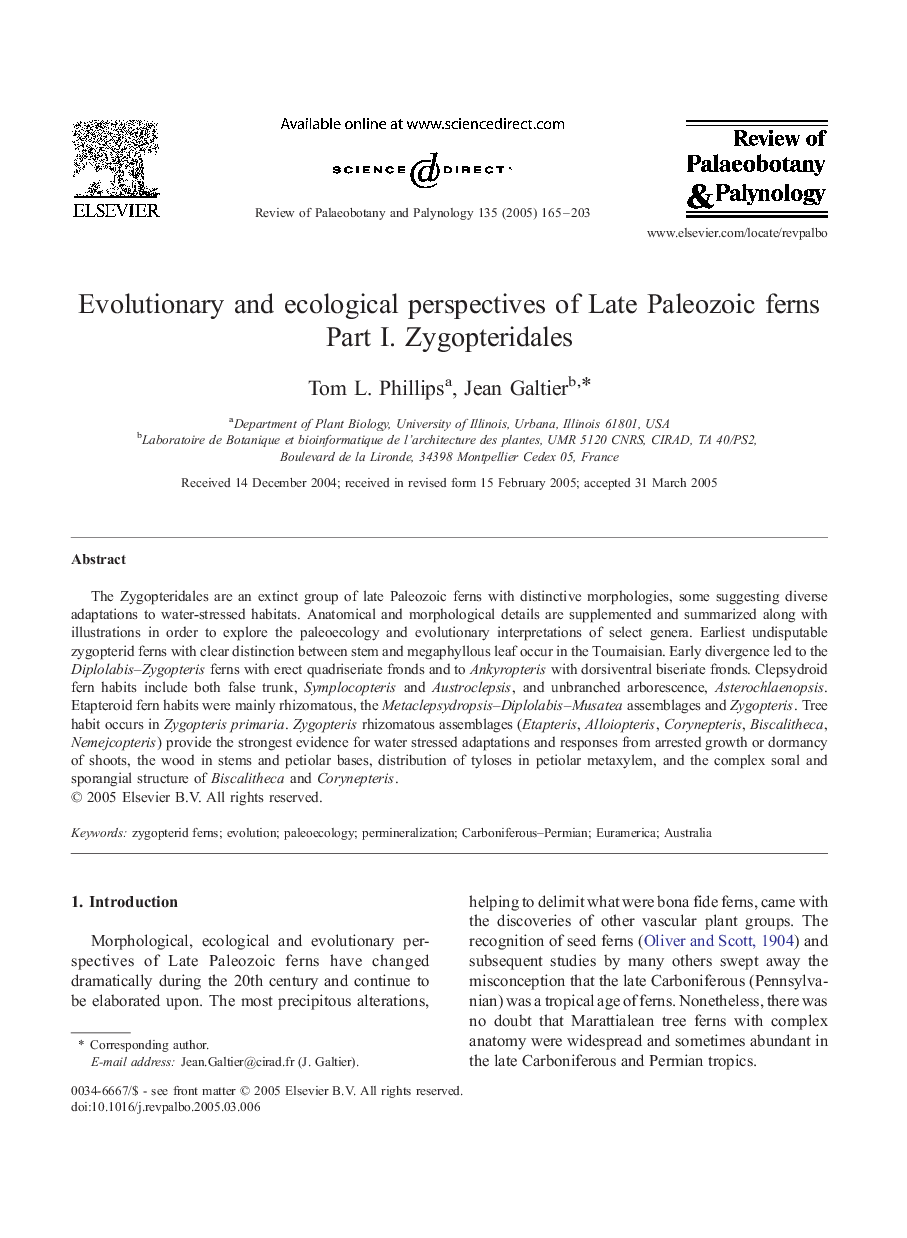| Article ID | Journal | Published Year | Pages | File Type |
|---|---|---|---|---|
| 10122066 | Review of Palaeobotany and Palynology | 2005 | 39 Pages |
Abstract
The Zygopteridales are an extinct group of late Paleozoic ferns with distinctive morphologies, some suggesting diverse adaptations to water-stressed habitats. Anatomical and morphological details are supplemented and summarized along with illustrations in order to explore the paleoecology and evolutionary interpretations of select genera. Earliest undisputable zygopterid ferns with clear distinction between stem and megaphyllous leaf occur in the Tournaisian. Early divergence led to the Diplolabis-Zygopteris ferns with erect quadriseriate fronds and to Ankyropteris with dorsiventral biseriate fronds. Clepsydroid fern habits include both false trunk, Symplocopteris and Austroclepsis, and unbranched arborescence, Asterochlaenopsis. Etapteroid fern habits were mainly rhizomatous, the Metaclepsydropsis-Diplolabis-Musatea assemblages and Zygopteris. Tree habit occurs in Zygopteris primaria. Zygopteris rhizomatous assemblages (Etapteris, Alloiopteris, Corynepteris, Biscalitheca, Nemejcopteris) provide the strongest evidence for water stressed adaptations and responses from arrested growth or dormancy of shoots, the wood in stems and petiolar bases, distribution of tyloses in petiolar metaxylem, and the complex soral and sporangial structure of Biscalitheca and Corynepteris.
Related Topics
Physical Sciences and Engineering
Earth and Planetary Sciences
Palaeontology
Authors
Tom L. Phillips, Jean Galtier,
